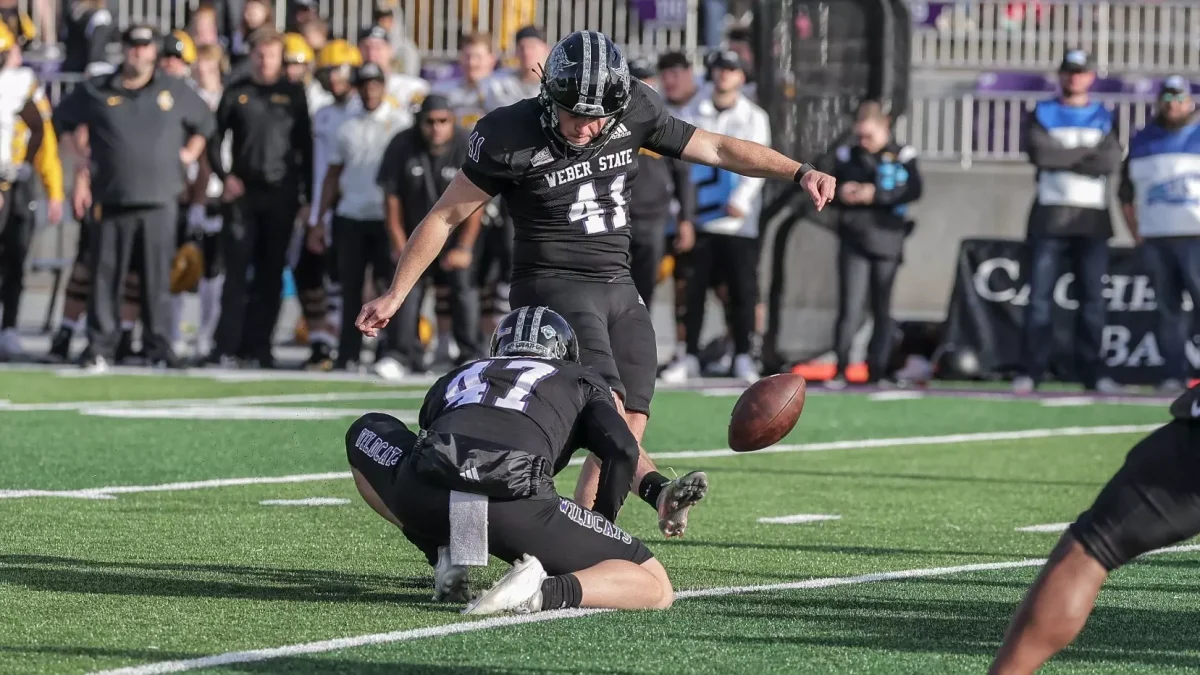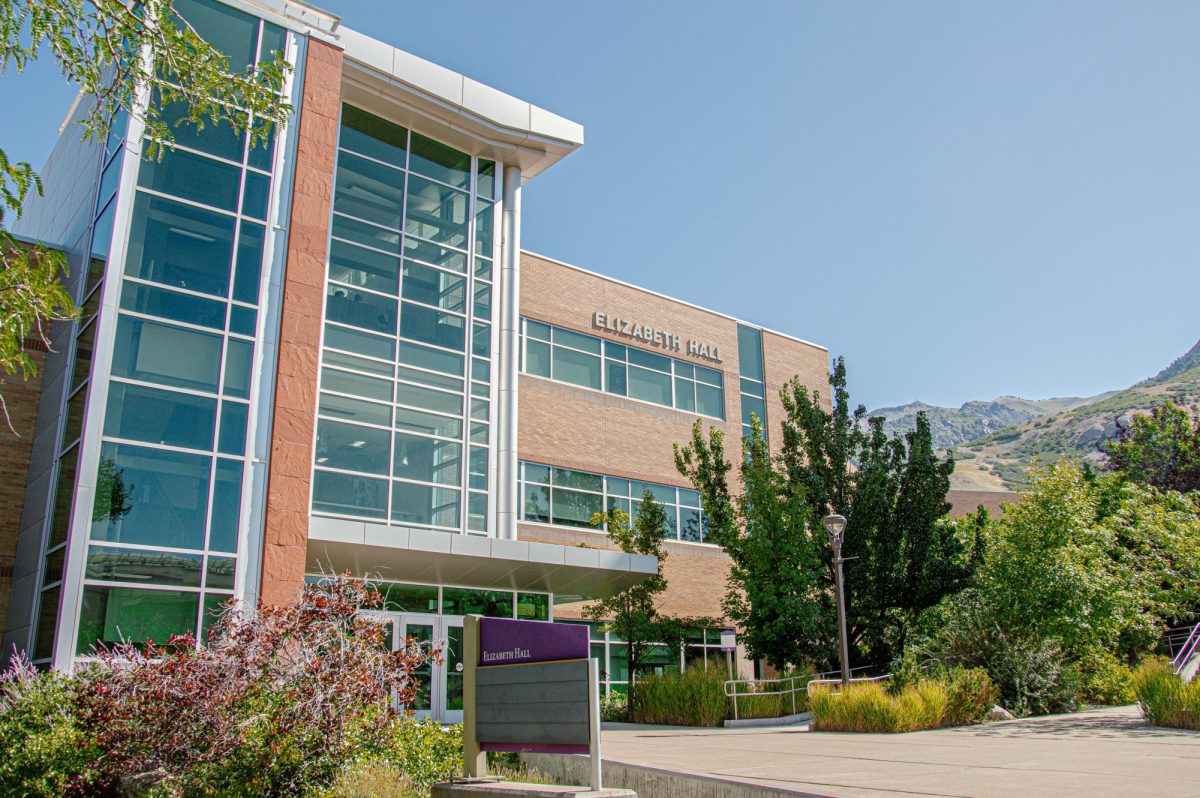A protest rattled the Weber State campus a little more than a week ago when students of color discovered they had not been informed of white supremacist propaganda that had been taped on campus days before. University President Brad Mortensen met with students on Nov. 4 during the protest and on Nov. 5 following the overnight protest. Mortensen held a second two-and-a-half hour follow-up meeting on Nov. 12 to discuss the plans the university had in place to address concerns brought up by both protesters and an external equity review conducted over the summer.

Reggie Blaylock, a presidential associate at Cal Poly Pomona, was invited by Mortensen to review the campus’s culture and how it helped underserved students, specifically students of color. Blaylock visited the campus virtually and in person Aug. 25-27 and met with students, faculty and staff about the campus climate and gathered information about how students felt equity, diversity and inclusivity was or was not incorporated into campus.
The release of Blaylock’s report was among the many concerns students, staff and faculty at the protest and conversations following it addressed. Prior to Nov. 12, the report had not been circulated outside of the administrators and certain faculty members. In the two previous meetings, Mortensen had pledged to send the report prior to the meeting on Nov. 12 after the university’s legal team finished looking through it. The report, without the appendices, was released after the meeting.
The report gave the administration seven specific recommendations. While this article summarizes those recommendations, the entire report is available here for anyone to review.
Blaylock recommended changes for the WSU Police Department, creating a Diversity and Inclusion Advisory Council, changing how WSU gets and uses its data, planning and implementing university plans for strengthening equity, diversity and inclusion, addressing financial aid changes that may have disproportionately affected low-income and minority students, changes in the Center for Multicultural Excellence and creating a Black Cultural Center.
As part of his report, Blaylock addressed the underfunding of all Access and Diversity programs and the deficit between the budget and the described plans of the university.
“It is painstakingly clear that these areas are underfunded given the size of the Institution, the scope of the work, and the charge at hand,” Blaylock’s report says.
Before addressing the Blaylock Report, Mortensen addressed the university’s new strategic plan, revised university mission statement and revised university value statements established in 2020.

The strategic plan establishes an “equity framework” that establishes equity-minded practices in and outside of the classroom and gaps in accessing resources that increase graduation rates in traditionally underserved student populations.
“Just saying them, I know that doesn’t make them that they are,” Mortensen said. “By establishing this language in our foundational statements, it sets that direction. This is what we expect everybody to do now within the strategic plan.”
As a subset to the strategic plan, several goals were created by the university, including their first goal of creating a university that had a strong sense of equity, diversity and inclusion, which Mortensen discussed at length during the meeting.
Several steps are outlined as part of the first goal, which addresses equity and inclusion: equity audits in every unit, department and college division by 2023; implementing equity-minded accountability and assessment practices in all academic and student support services by 2025; increasing faculty and staff from underrepresented populations from 11% to 20%; including and equity-minded practices on job qualification and performance review criteria; and assessing and maintaining a sense of belonging of 80% or greater among traditionally underserved students, faculty and staff.
“Is this going to change things tomorrow in your classes or something? Probably not,” Mortensen said. “We’re trying to do that at the macro level. Dr. Blaylock’s report will help us to look at more immediate things.”
Blaylock first recommended a University Police Advisory Board. The function of the board would be to act as a “conduit” between the police department and the university community to obtain input on campus safety issues. The board would also provide updates to Mortensen and the President’s Council. A second part of the board’s responsibility would be conducting safety walks around campus with students to find areas of campus that make students, staff or faculty feel unsafe.
The second recommendation was creating a Diversity, Equity and Inclusion Council to advise Mortensen or the university on issues to create a more inclusive campus. Mortensen outlined a plan that would include faculty, staff and student representation, including having a student chair or co-chair.

Some of the issues they would address under the recommendation would be establishing subcommittees with broader representation and developing methods for broader community input.
The third recommendation is to use data to help unite the campus instead of allowing areas of campus to remain separate because of how data is divided.
The fourth recommendation was to implement the strategic plan across campus more effectively and ensure there is training to back up the philosophies the value statements and mission statement lay out. This would include adding equity and inclusion modules or sessions to new student and parent and family orientation. This would allow all those who attend new orientations to develop simultaneously. New employee training was also recommended to start including equity training for all faculty and staff, including requiring it for promotions and tenure where possible.
For faculty and staff already at the university, it was recommended that there is a program developed for current employees to ensure the training reaches them as well.
One of the biggest recommendations was Blaylock’s recommendation on Financial Aid. Based on research he had compiled, he stated that with economic and social success continually relying more and more on a four-year degree financial aid should support students from all income groups.
“Occasionally, we see the results of unintended consequences or corruption of policies seemingly intended to reduce economic disparities,” the report reads. “While originally intended to help close income differential in college completion, unchecked policies could serve to exacerbate continuing disparities.”
Blaylock recommended creating a cross-divisional task force to examine the tuition cap placed on scholarships and tuition waivers that was implemented in 2018. This does not allow a student to receive more financial aid through the university than 25% of tuition and fees. Blaylock specifically mentioned in the report that this likely impacts middle and lower-class students, especially middle and lower-class students of color.

The sixth recommendation highlighted disfunction in the Center for Multicultural Excellence, including that the staff of the center were unaware of the 2018 CME Program Review recommendations, including that staff was not performing at the highest level possible for students.
Many of the Black students at the meeting recounted their own struggles with the CME and their inability to get access to resources at the center, despite being referred and stationed their.
The last recommendation was to create a Black Culture Center, which would specifically address Black students gaining access to resources through an area dedicated to them.
Vice President of Student Affairs Brett Perozzi noted that they were already in the process of locating an interim space for a Black Culture Center while looking for a more permanent solution for the center.
Throughout Mortensen’s overview of the report, students, staff and faculty expressed their need for real change and not just more reviews, new value statements and goals. Many expressed the sentiment that no change was truly coming despite the conversations held over the last week.


















